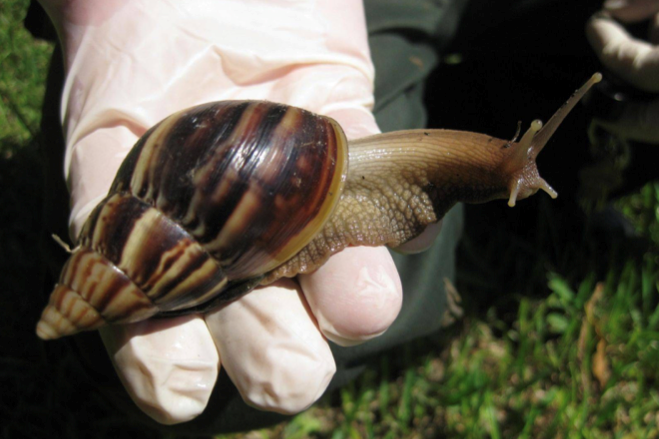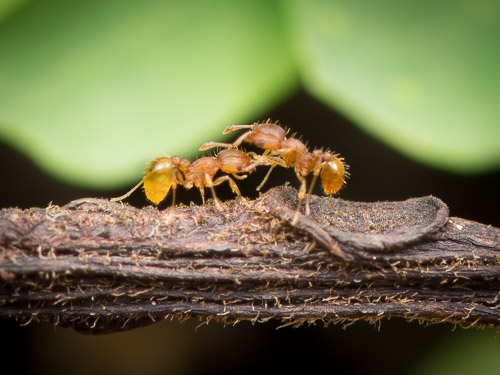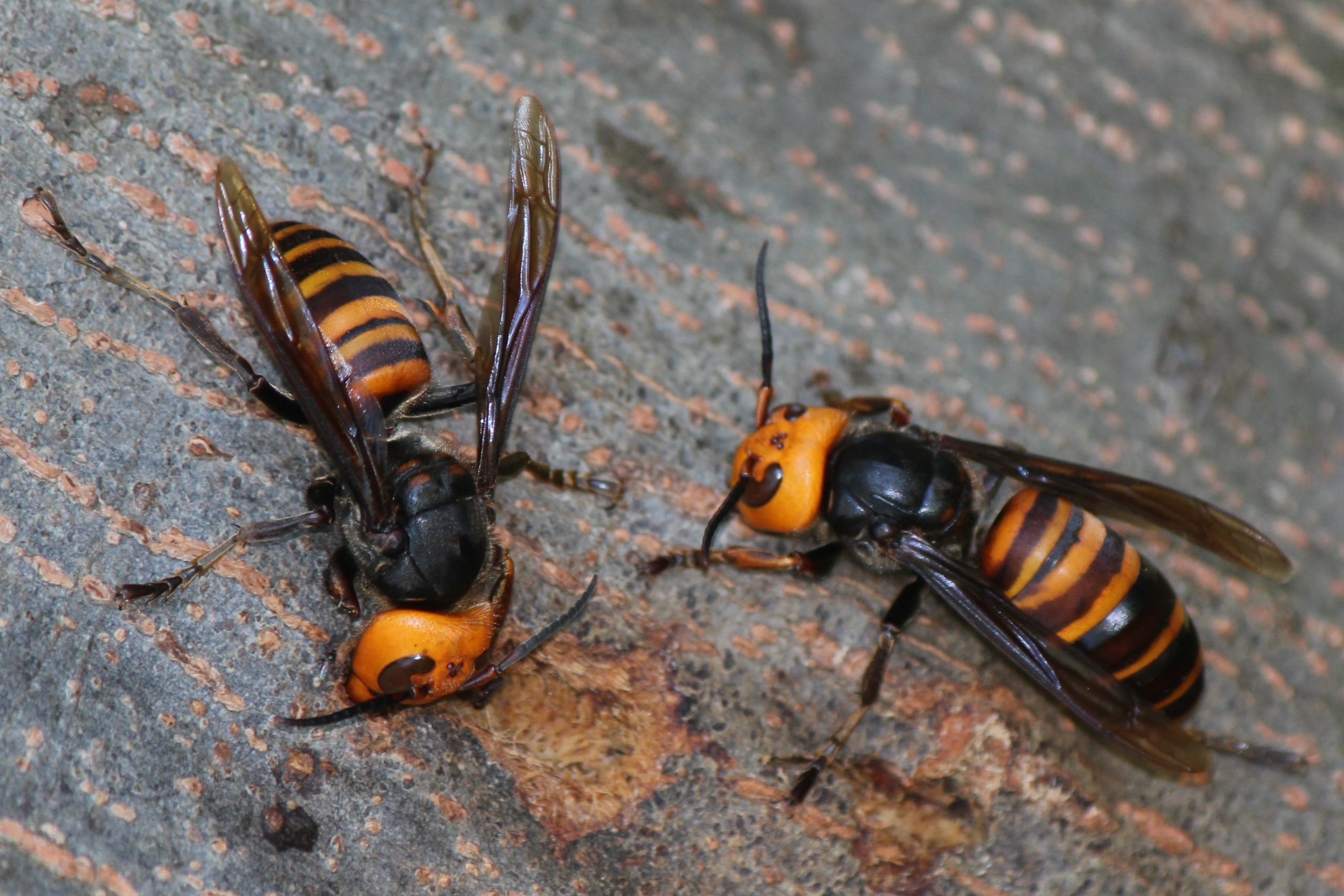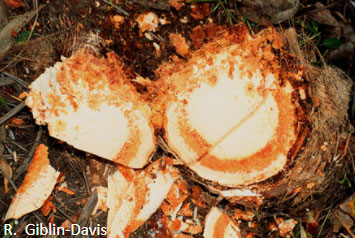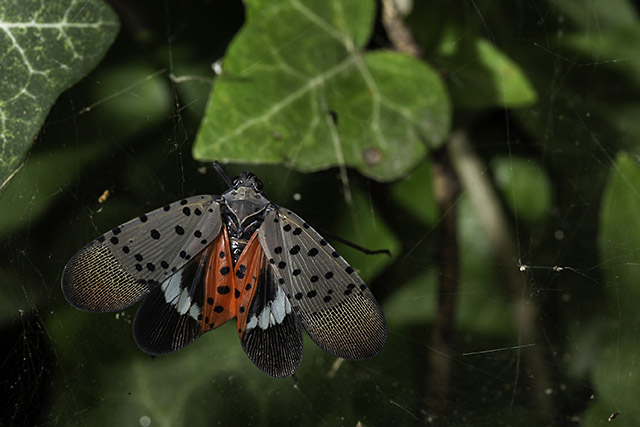Common name: Red ring nematode
Scientific name: Bursaphelenchus cocophilis
Status in Hawaii: Not known to be present in Hawaii
One of the most significant palm pests in the tropics as it causes red ring disease in palms, carried to uninfected trees by parasitizing the palm weevil, Rhynchophorus palmarum.
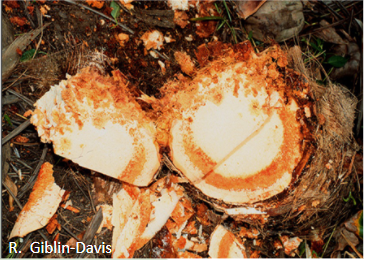

Impacts
- Red ring disease can appear in several species of tropical palms, including date, Canary Island date and Cuban royal, but is most common in oil and coconut palms. These nematodes normally attack coconut trees between 3-7 years old, they normally die 6-8 weeks after symptoms show.
- Red ring nematodes invade both palm tissue and roots. In leaves, stem and roots, they block water pathways, reducing the palm’s water absorption. The heaviest concentration of nematodes can be found within a foot of the highest part of the internal red ring that is a classic symptom of red ring disease.
- On the body of a weevil or in the soil, red ring nematodes survive less than a week, but they can survive 16 weeks in nut husks and 90 weeks in seedling tissue. Once within the weevil they can live for a while.
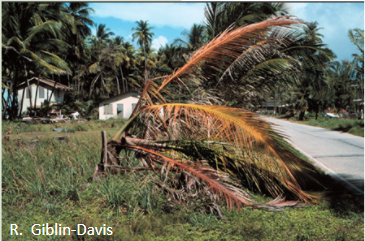

Identification
- Red ring nematodes are typically slender and about 1 mm long.
- Red ring disease can be identified by making a crosswise cut through the trunk of an infected palm one to seven feet above the soil line usually will reveal a circular, colored band approximately 3 to 5 cm wide, variable with the size of the tree. The surface of the cut in a healthy tree appears a solid, creamy white. The most common color of the band is bright red, although the shade can vary from light pink or cream to dark brown in infected African oil palms.
- In external symptoms, already-established leaves become short and deformed and turn yellow-bronze, then deep reddish-brown. The color change usually begins at the tip of each leaf and starts in the older leaves before moving to the younger ones. As the leaves change color and dry up, they wilt and die. Internal symptoms can take 2-3 weeks to appear and external symptoms can take up to 2 months to appear.
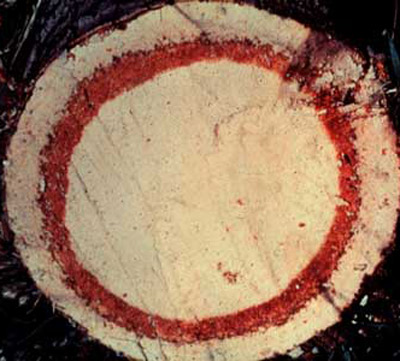

Vectors/Commodities
- Spreads with the South American palm weevil (Rhynchophorus palmarum). It is the third larval stage that is typically deposited in a palm by South American palm weevil as it lays its own eggs in the tree. Inside the tree, the red ring nematodes eat, grow and reproduce. When the weevil eggs hatch, immature nematodes move into the larvae and remain inside them as the weevils undergo metamorphosis. When the weevils mature, they leave the palm with new batches of third-stage larval nematodes ready to infest a new tree. The nematodes do not reproduce inside the weevils.
- Other recorded vectors are ants, spiders, and other weevils, but the South American palm weevil is the most common.
- Can also be transmitted by tools that have been used to cut down an infected tree.
- Transporting infected coconut and other palm tissues.
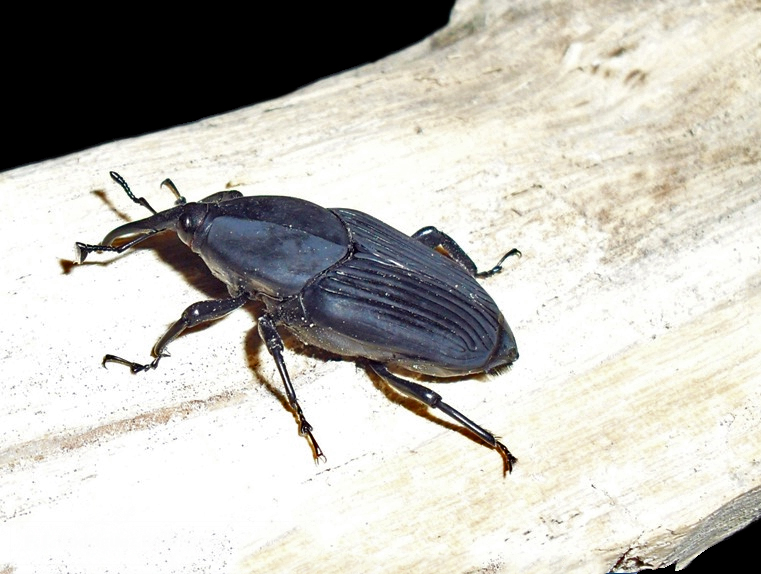

Distribution
- Central America, South America, Mexico

Best Management Practices
- This species is not known to occur in Hawaii. Prevention and early detection efforts protect Hawaii’s nursery industry and environment.
- BOLO: Be on the lookout! Carefully inspect all palms for the South American Palm Weevil.
- Report any suspect pests to 643pest.org or by phone 643-PEST (7378).
Other Nursery Pests
PEST PREVENTION TRAINING
An advanced education program for those on the front lines protecting Hawaii from invasive species.
Contact your local Invasive Species Committee to schedule a training for your team. Learn more
This material was made possible, in part, by a Cooperative Agreement from the United States Department of Agriculture’s Animal and Plant Health Inspection Service (APHIS). It may not necessarily express APHIS’ views.














